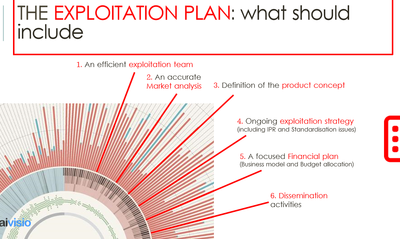Serious Thinking
From research to market in six steps
by João Victor*
Ever since I started studying at the University of Porto, I’ve always heard good things about INESC TEC and about the researches that are developed here, namely in the energy area which is my core training. The thing that draw my attention the most was the close relation between industry and society in order to meet specific needs, often with the support of Community funds (Portugal 2020, Horizon 2020, for example). I was amazed with this scenario that is favourable to innovation. But what is the real impact of these projects? Can the projects go beyond their prototypes and demonstrators?
According to Henry W. Chesbrough, author of the book entitled Open Innovation, it’s necessary to “innovate the innovation”. The success of a new technology no longer depends only on its features and functionalities, being the development of new business models crucial to ensure its long-term viability. A difficult task that requires to leave the laboratory and to "venture in the market", to engage with potential users and holders of technology, to understand its "obstacles" and expectations ... The author also emphasises that consumers should participate in the design of the product/solution because we have much to learn from them. This will also bring future benefits in the technology adoption.
So then you ask me: “João, how can I apply the idea of “innovate the innovation” in the projects that I’m involved here at INESC TEC?" Therefore, I present you the six steps in order to develop an Exploitation Plan, a tool that intends to maximise the long-term results of the project and that is used by the evaluating entities as an impact parameter of the plan itself.

1) Exploitation Team
Everything starts with the definition of a team dedicated to this activity, who will act as a bridge between the laboratory and the market. The team must be capable of involving potential users and holders of technology that are looking for insights and cooperation during the project process, as well as studying legal issues and market trends that facilitate the technology adoption.
2) Market Analysis
During this step, one should understand the market potential, its trends and barriers, map the target-users and their needs, holders of technologies, competitors, important key partners... Tools like the SWOT and PESTEL Analysis are recommend in order to collect the obtained information, resulting in a more strategic vision.
3) Definition of the Product Concept
Based on the insights that were obtained in the previous step, we move towards the technology design. More practical questions must be answered: what is the storage capacity of the machine that will integrate my software? The operational system is Microsoft or Linux? In which functionalities should we focus our attention based on the user needs? Among many other questions. And, as mentioned before, including the consumer as the co-creator in this process will increase the rate of success and future adoption.
4) Exploitation Strategies
Let me give you an example: you have just invented a fancy charger for electric vehicles (as we have at INESC TEC). How to ensure that your technology will be largely adopted in the market? How to prevent someone from copying this idea? For that, strategies of intellectual protection and normalisation are developed. Do you think the technology that you are developing could result in a patent, be licensed or a company has interest in purchasing it? I recommend that you seek the Technology Licensing Office (SAL), where you will have all the support in the intellectual protection and technology transfer processes.
5) Financial Plan
Now, there is an important part: how much can you earn with this? This is a key factor for defining the viability of the solution in hand. Different business models should be studied and define the one that maximises your financial returns. This is the step to identify how to maximise revenues, to reduce fixed costs, to find funding sources and to create Excel worksheets.
6) Dissemination Activities
We don’t buy what we don’t know. Isn’t that true? So, after so much work, we don’t want everything to be just a prototype in the laboratory or a demonstrator, right? With a good communication plan, we can effectively reach the end-users, holders of technology or other partners who wish to make our solution possible on a large scale.
I hope I have made some of you interested in increasing the proximity to the market and in involving key players in the development stage of the solutions, ensuring sustainable and long term results. And that besides the focus on technological innovation, may we strive to carry out market studies, intellectual protection, financial and communication plans. This way, we will fulfil our role as technology transfer, converting research into GDP.
*Collaborator of the Centre for Power and Energy Systems (CPES)
Photo credits: Haivisio


